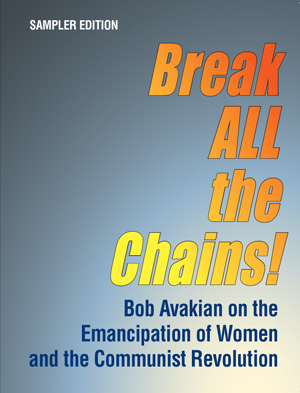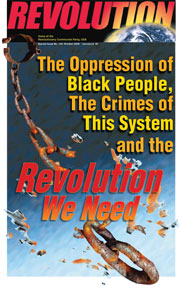As Abortion Clinics Are Forced to Close...
Hundreds of Thousands of Texas Women Attempt Self-Induced Abortion
November 23, 2015 | Revolution Newspaper | revcom.us

Download the PDF of this pamphlet: A Declaration: For Women's Liberation and the Emancipation of All Humanity
The state of Texas has been on the leading edge of the war on women’s right to abortion. In 2013 the governor signed HB 2, a bill forcing major, medically unnecessary, restrictions on clinics providing abortions. These measures forced over half of the state’s abortion clinics—23 of the then-existing 41—to close. There are now 18 clinics in this state, serving the six million women of child-bearing age. New restrictive measures that would close another nine of these clinics are being contested in the courts, and the U.S. Supreme Court will rule on those measures this session. If they are upheld by the Court, the entire city of El Paso, with over 800,000 people in its metropolitan area, will have zero abortion providers!
Now there is evidence documenting the tremendous consequences that these attacks are already having, and will increasingly have, not only on women in Texas, but women across the U.S., where similar restrictions on abortion are being implemented or are in the pipeline.
Resist attacks on abortion rights!
Get involved with StopPatriarchy.org or email StopPatriarchy@gmail.com
A study by the Texas Policy Evaluation Project (TxPEP) at the University of Texas has revealed that between 100,000 and 240,0001 Texas women of childbearing age have already been forced to opt for self-induced abortion because of the growing difficulty of finding, traveling to, and paying for abortions at clinics.
The women described a variety of abortion methods. Along the Texas border, many, particularly Latinas, obtained misoprostol from pharmacies in Mexico, where (unlike the U.S.) it is available without prescription. Misoprostol induces miscarriage. It is an effective means for medical (non-surgical) abortion; however, taking it without supervision from or access to a doctor can be scary and potentially unsafe. But because abortion has been criminalized and stigmatized, most of the women who used misoprostol were afraid to even tell a doctor about it, even when they were in fear of what was happening, or had doubts about whether the abortion had been successful. One woman reported, “I read something, you know, that you’re not supposed to do an abortion outside the clinic or you’ll go to jail or something. And so I was really scared to go back to a doctor and tell them that I wasn’t pregnant anymore.”

Break ALL the Chains!
Bob Avakian on the Emancipation of Women and the Communist Revolution
Imagine what it is like to go through this at home, and being unable to even consult with a doctor! A 24-year old woman in the TxPEP study described her experience:
“It started off slow and ...went from zero to sixty real quick and it was just like really painful, intense cramping. It was the worst cramping I’ve ever had and probably one of the worst pains I’ve gone through. And there was also the fact that I’m doing it at home, we’re not—though we have all of the information as to how much bleeding is too much bleeding, you know, or that, there’s always that slight uncertainty of like I don’t really know what I’m doing.”
Other women used methods that were either completely ineffective (various herbal remedies) or outright dangerous, such as being punched in the abdomen.
Why did these women try to self-induce, rather than go to a clinic? During more in-depth interviews with 18 women, every one of them said they wanted to go to a clinic and tried to do so, but it was not possible under their circumstances. Because of the tremendous restrictions already in effect, women found that the clinic in their area had closed, that the wait for an abortion was as long as four weeks, that the costs were as high as $1,200, that they would have to travel for hundreds of miles, or other obstacles that forced them to try and self-induce at home.
A 24-year-old woman in the Rio Grande Valley said: “I didn’t have any money to go to San Antonio or Corpus. I didn’t even have any money to get across town. Like I was just dirt broke. I was poor.”
This study gives an alarming window into what is happening right now to millions of women, and what tens of millions will confront if the escalating attacks on abortion are not beaten back and turned around.
1. TxPEP asked women if they themselves had tried to self-induce an abortion; 1.7 percent had, which translates into 100,000 for the state as a whole. Because of the stigma around abortion, it is known that people underreport their own abortions. So TxPEP also asked if “your best friend” has ever self-induced an abortion. 2.8 percent said they knew for sure, and 1.3 percent said they suspected she had, or 4.1 percent total. This translates into 240,000 statewide. Because of the many “suspected”—meaning they were not certain—abortions, the figure on self-induced abortions is calculated as somewhere between the high and low end, but probably much closer to the higher figure of 240,000.
Volunteers Needed... for revcom.us and Revolution
If you like this article, subscribe, donate to and sustain Revolution newspaper.







